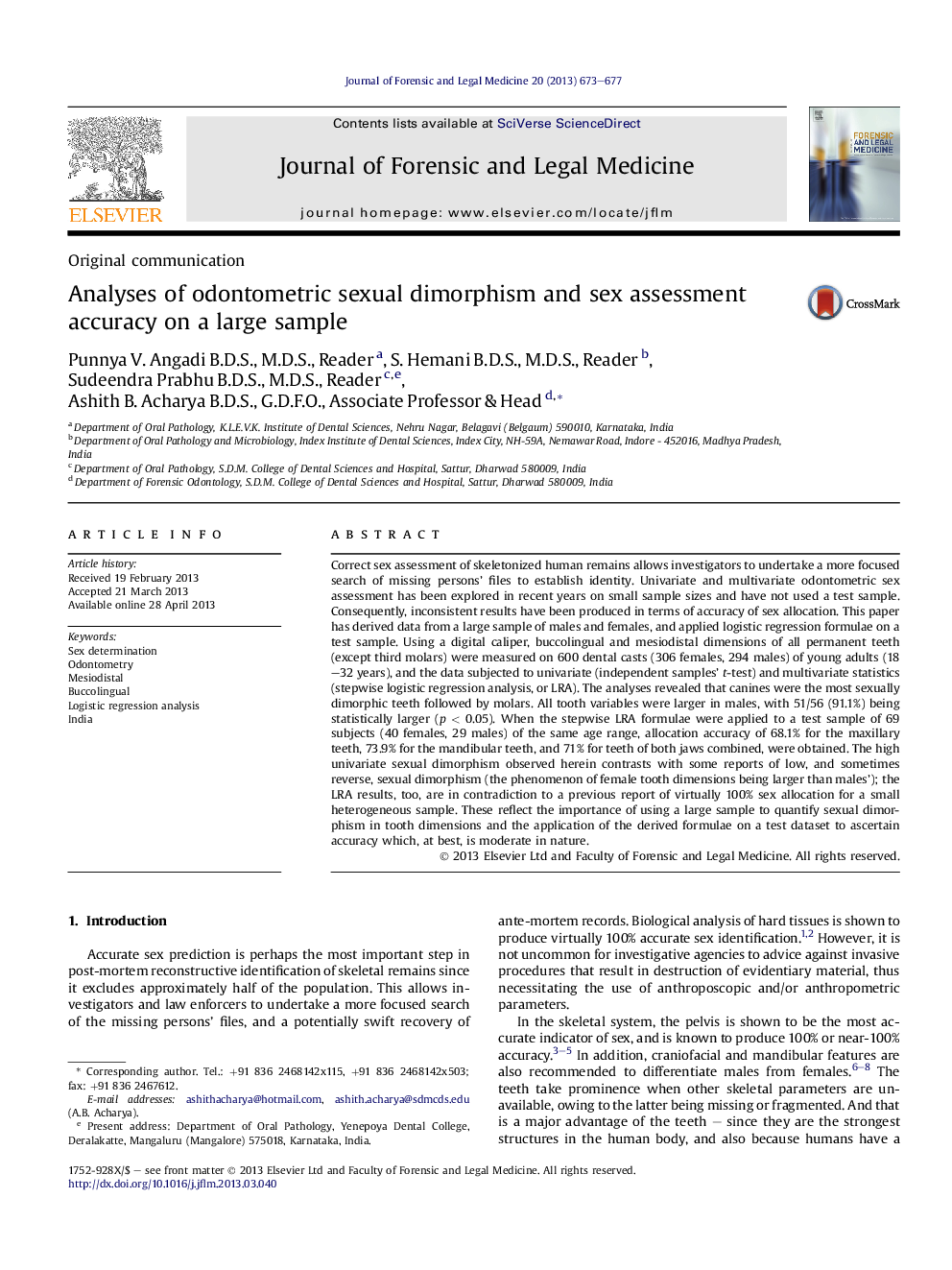| کد مقاله | کد نشریه | سال انتشار | مقاله انگلیسی | نسخه تمام متن |
|---|---|---|---|---|
| 102082 | 161306 | 2013 | 5 صفحه PDF | دانلود رایگان |

Correct sex assessment of skeletonized human remains allows investigators to undertake a more focused search of missing persons' files to establish identity. Univariate and multivariate odontometric sex assessment has been explored in recent years on small sample sizes and have not used a test sample. Consequently, inconsistent results have been produced in terms of accuracy of sex allocation. This paper has derived data from a large sample of males and females, and applied logistic regression formulae on a test sample. Using a digital caliper, buccolingual and mesiodistal dimensions of all permanent teeth (except third molars) were measured on 600 dental casts (306 females, 294 males) of young adults (18–32 years), and the data subjected to univariate (independent samples' t-test) and multivariate statistics (stepwise logistic regression analysis, or LRA). The analyses revealed that canines were the most sexually dimorphic teeth followed by molars. All tooth variables were larger in males, with 51/56 (91.1%) being statistically larger (p < 0.05). When the stepwise LRA formulae were applied to a test sample of 69 subjects (40 females, 29 males) of the same age range, allocation accuracy of 68.1% for the maxillary teeth, 73.9% for the mandibular teeth, and 71% for teeth of both jaws combined, were obtained. The high univariate sexual dimorphism observed herein contrasts with some reports of low, and sometimes reverse, sexual dimorphism (the phenomenon of female tooth dimensions being larger than males'); the LRA results, too, are in contradiction to a previous report of virtually 100% sex allocation for a small heterogeneous sample. These reflect the importance of using a large sample to quantify sexual dimorphism in tooth dimensions and the application of the derived formulae on a test dataset to ascertain accuracy which, at best, is moderate in nature.
Journal: Journal of Forensic and Legal Medicine - Volume 20, Issue 6, August 2013, Pages 673–677